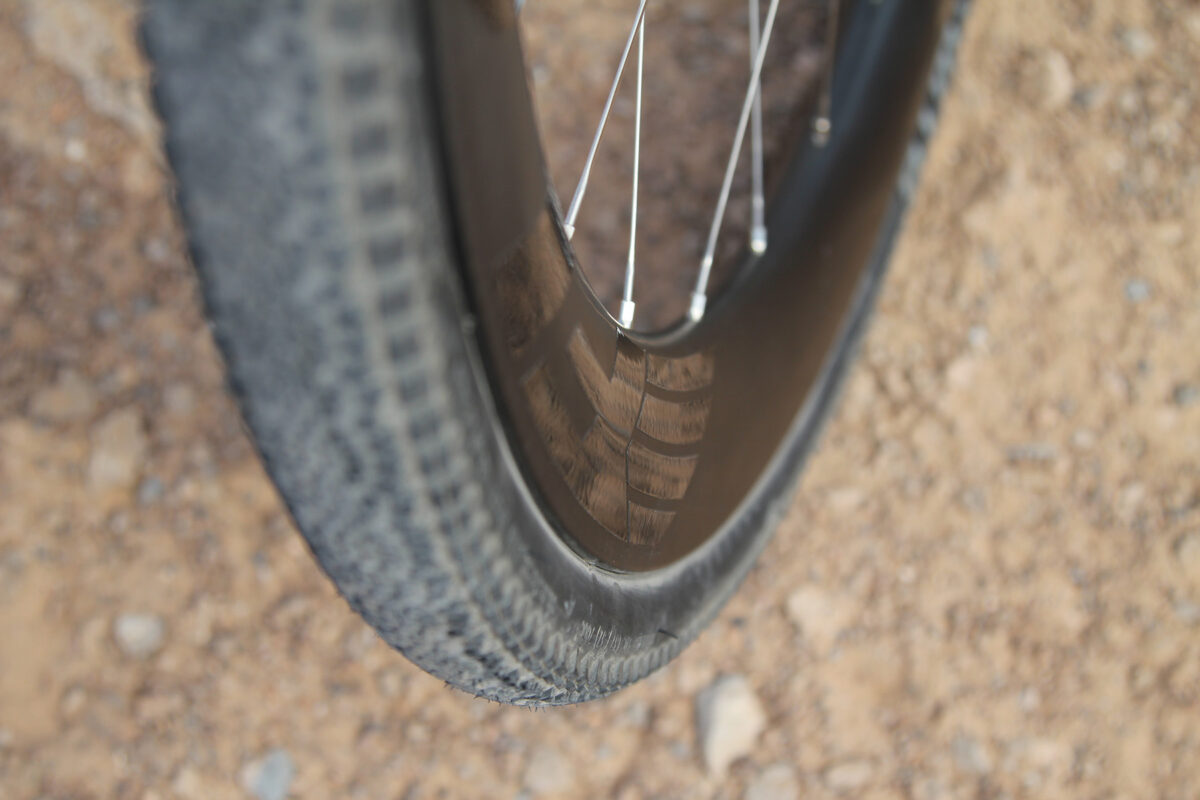Mountain bikes have shocks to help absorb obstacles on the trail. Roads do not usually contain those obstacles so no shocks are needed on road bikes. What about gravel? Cycling shocks were heavily debated for several years through the “Frankenbike” phase and the bikes people rode in the early gravel days were entertaining. Ultimately, the sport is settling on a gravel bike design sans shocks.
Vibration absorption is important for many reasons, but most importantly, it makes you faster. So, without shocks on a gravel bike, how can we absorb vibration? Here are a few options along with how well they work:

- Frame Carbon Layup: Carbon fiber has a modulus value -high modulus is stiffer and low modulus is softer. A bike frame designer can put the fibers in locations to give the frame flex, which helps to reduce vibration but not a lot.
- Wheel Design: Our FLO Gravel wheels are designed with a deep profile for aerodynamics but it also acts as a leaf spring. A leaf spring reduces vibrations and allows the front wheel to track better thus creating a smoother ride.
- Bike Handling: On the road, we learn to pedal and work hard. On gravel, we also have to learn to manage the terrain so we are not working in opposition to the bike. Learning to ride efficiently and properly managing the pressure of your bike can greatly improve the vibration in the bike allowing for a smoother ride. If you want to learn more about this, check out our podcast with the legendary Lee McCormack.
- Adjusting Tire Pressure: Last but not least, one of the most beneficial options for reducing vibration choosing the right tire and tire pressure. Let’s dive in a little more.
Reducing Vibration With Tire Pressure
The two main benefits of optimal tire pressure are grip and vibration reduction.
Pneumatic tires have a spring coefficient that is derived from their construction and the air pressure inside them. The spring coefficient of pneumatic tires is a measure of the tire’s ability to absorb shocks and vibrations and provide a smooth ride.
In general, a tire with a higher spring coefficient will be stiffer and less likely to compress under load, while a tire with a lower spring coefficient will be softer and more compliant. Too much bouncing or a rim strike is ultimately a condition when our spring coefficient is incorrect for our given terrain. So ultimately, picking the right tire and pressure is an effort to optimize the spring coefficient of our tires.
The Best Tire Pressure For Gravel Cycling
Tire pressure in gravel cycling is just as important as road cycling but it is more apparent when you get it wrong. Assuming your bike handling skills are dialed in, when your pressure is too high you bounce over undulations in the terrain. Once you start bouncing, the energy you’ve put into the pedals to move you forward starts being wasted by moving you up and down. Your rolling resistance also greatly increases since you’ve passed the impedance breakpoint. All this creates a not-so-comfortable ride and slows you down.

On the other hand, if your tire pressure is too low, you run the risk of a rim strike on larger obstacles. Even if you do not get a rim strike, a tire needs a certain amount of casing tension from pressure to be able to support its load. With insufficient casing tension, the side walls of the tire can buckle and prematurely wear your tire.
So the best tire pressure for a gravel cyclist is in the sweet spot of not too high and not too low. To help you find this pressure, we created a detailed tire pressure chart located on each wheel page that takes into account many factors.
Final Thoughts
If you’re coming from the road or tri world just know that gravel riding should feel as smooth and as good as the road in most situations. If you are finding gravel punishing it’s a good sign that things are not set-up correctly or that you may need to improve your bike handling skills. Get these dialed in and you may find yourself having a hard time heading back to the pavement.

Co-founder at FLO Cycling. Jon manages the day to day operations and acts as the lead engineer for all FLO products.
